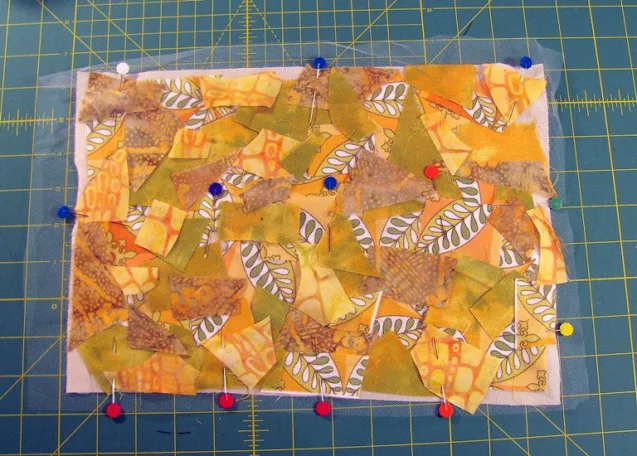
1. How to Make a Vintage Planter Pin Cushion
Pin cushions are an absolute necessity in any sewing studio. You usually don't realize this until you don't have one around when you need it. If you go online or on Pinterest, you'll see hundreds of different variations of a pin cushion. There was, however, one pin cushion I fell in love with. It's the vintage planter pin cushion.
I came across these little cuties at Lovely Little Handmaids and knew I had to make one. I picked up a vintage planter at the flower shop and, in no time, I made this adorable little pin cushion. See the instructions below to make your own. I think they would make great gifts for your sewing friends.
You can probably find one of these little planters at a thrift shop or rummage sale for a few cents. You may also want to check out your local florist shop to see if they have any kicking around from days gone by. That's where I found mine.
I came across these little cuties at Lovely Little Handmaids and knew I had to make one. I picked up a vintage planter at the flower shop and, in no time, I made this adorable little pin cushion. See the instructions below to make your own. I think they would make great gifts for your sewing friends.
INSTRUCTIONS
You can probably find one of these little planters at a thrift shop or rummage sale for a few cents. You may also want to check out your local florist shop to see if they have any kicking around from days gone by. That's where I found mine.
Step One
To give the pin cushion extra weight, glue pebbles to the bottom of the container with a glue gun.
Step Two
Measure the diameter of the opening of the container and cut a circular piece of fabric two inches larger than this measurement.
Step Three
With a strong thread, stitch around the edge of the fabric. Pull the thread to gather the fabric leaving an opening large enough to insert the filler.
Step Four
Stuff the fabric with lots of filler then tighten the thread and secure it with a knot.
Step Five
With a glue gun, apply hot glue around the inner edge of the container. Place the "fabric ball" into the container making sure it adheres to the glue.
2. How to Make a Juki 2010Q Wrap-Around Pin Cushion
I recently made this pin cushion for my new Juki 2010Q. I can't work unless this is wrapped around my machine. Don't you love the thread spools fabric? It's from the Cute As a Button fabric line by Delphine Cubitt. NOTE: This pattern can be customized to fit any sewing machine by adjusting the length of the end straps.

MATERIALS
- [2] 4" x 24" strips of fabric of your choice.
- [2] 1" pieces of hook and loop tape (Velcro®).
- Toy stuffing or leftover quilt batting.
Download pin cushion pattern HERE
INSTRUCTIONS
1. Layer the two fabrics and fold in half at the center.

3. With right sides facing, stitch a 1/4 inch seam from end to end as seen below. Leave the ends open, and leave a 3 inch opening on one side.


4. Turn stitched piece right side out and press.


5. Fold the piece in half vertically and place the template on it.
6. With a fabric marker or pencil, mark on the fabric the vertical lines on the template.
7. Stitch both vertical lines.

9. Fold in both ends 1/4 inch and stitch closed.
10. Stitch on the hook and loop tape at each end.
3. The Classic Mason Jar Pin Cushion
This is my go-to pin cushion for small mending jobs. The Mason jar (mine is a Gem jar) pin cushion is an all-time classic. You can find hundreds of these on Pinterest. There's that cute thread spool fabric again. Here's a great tutorial from The Seasoned Homemaker.
4. How to Make a Picture Frame Pin Cushion
Here is another pin cushion idea I used for my Pfaff machine. If you don't have any buttons on the front of your sewing machine, this pin cushion works great and looks ultra stylish.
INSTRUCTIONS
- Get a small pretty frame and remove the backing and glass.
- Cut a piece of thin cardboard the size of the backing.
- Cut a piece of fabric one inch larger than the cardboard piece.
- Glue some stuffing to the cardboard.
- Wrap and glue the fabric edges 3/4 of the way around the stuffing and the cardboard and let dry.
- Add more stuffing as needed and finish gluing fabric edges to the cardboard.
- Put the stuffed cardboard through the frame.
- Re-attach the frame backing to hold cushion in place.
- Use sticky-back Velcro® to adhere the finished pin cushion to the front of the sewing machine.


























